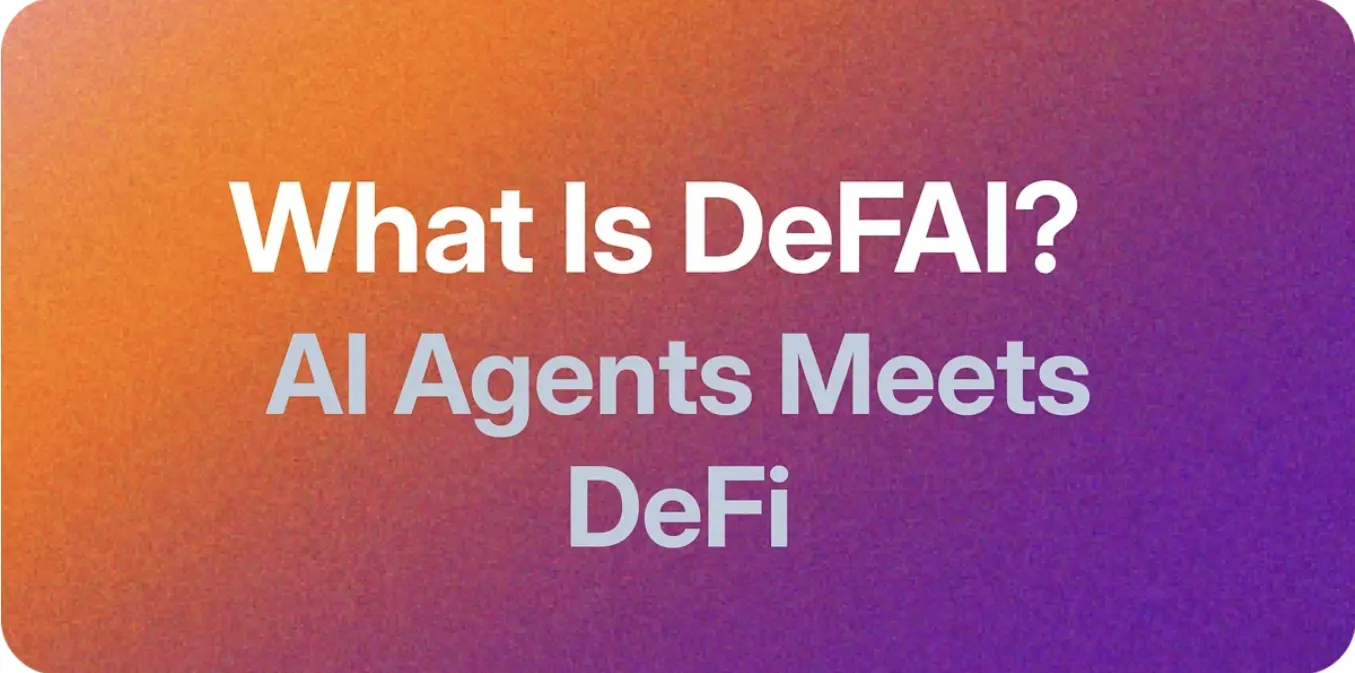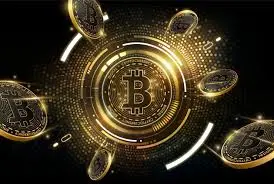Chapter 2: What is Decentralized Finance (DEFI)?
Decentralized Finance (DeFi)
Decentralized Finance (DeFi) is a movement that enables users to access financial services such as lending and trading without relying on centralized entities. These financial services are provided by decentralized applications (Dapps), most of which are deployed on the Ethereum platform.
While understanding how Ethereum works helps to better grasp this ecosystem, you do not need to be an Ethereum expert to use the tools provided by DeFi. We will discuss Ethereum further in the next chapter.
DeFi is not a single product or company, but rather a range of products and services that serve as alternatives to institutions like banks, insurance companies, bonds, and money markets. DeFi Dapps allow users to combine the services they offer, unlocking more possibilities. Due to its composability, DeFi is often referred to as money LEGO.
To use DeFi Dapps, users typically need to lock collateral in a smart contract. The cumulative value of collateral locked in DeFi Dapps is often referred to as Total Value Locked (TVL). According to DeFi Pulse, the TVL was approximately $275 million at the beginning of 2019, and by February 2020, it had surged to $1.2 billion. The rapid growth of TVL marks the swift development of the DeFi ecosystem.
DeFi Ecosystem
The rapid development of DeFi is such that we cannot cover all DeFi applications in this book. This is why we have chosen to highlight only a few categories and certain DeFi Dapps. We believe it is important and crucial for beginners to understand the content in this book before engaging with the DeFi ecosystem.
These DeFi Dapps aim to revolutionize traditional financial services by eliminating the need for intermediaries. However, it is important to note that DeFi is still in its early experimental stages, and many projects are evolving daily. Over time, DeFi will continue to develop, and it may look completely different from what it is now. Nevertheless, understanding the early forms of DeFi is still useful, and you can leverage the knowledge gained to make the most of the functionalities that DeFi Dapps currently offer.
How Decentralized is DeFi?
How decentralized is DeFi? Answering this question is not straightforward. For simplicity, we categorize the degree of decentralization into three types: centralized, semi-decentralized, and fully decentralized.
Centralized
- Characteristics: Custodial, centralized price feeds, centralized interest rate determination, centralized liquidity injection during margin calls
- Examples: Salt, BlockFi, Nexo, and Celsius
Semi-Decentralized (having one or more but not all of the above characteristics)
- Characteristics: Non-custodial, decentralized price feeds, permissionless margin calls, permissionless liquidity adjustments, decentralized interest rate determination, decentralized platform development/upgrades
- Examples: Compound, MakerDAO, dYdX, and bZx
Fully Decentralized
- Characteristics: Every component is decentralized
- Examples: Currently, there are no fully decentralized DeFi protocols
At present, most DeFi Dapps fall into the semi-decentralized category. For further breakdown of decentralized components, you can read Kyle Kistner's article in the recommended reading section. Now, you should have a better understanding of what decentralization entails; let's continue to introduce the main categories of DeFi.
Main Categories of DeFi
In this book, we will cover the following eight main categories of DeFi:
- Stablecoins
It is well-known that cryptocurrency prices are extremely volatile. Daily price fluctuations of cryptocurrencies often exceed 10%. To mitigate this volatility, stablecoins are created, pegged to stable assets like the US dollar.
Tether (USDT) is one of the earliest centralized stablecoins introduced. It is said that each USDT is backed by one dollar in the issuing institution's bank account. However, a major drawback of USDT is that users must trust that its dollar reserves are fully collateralized and actually exist.
Decentralized stablecoins aim to solve this trust issue. Decentralized stablecoins are created in a decentralized manner through over-collateralization, operate entirely on decentralized ledgers, are governed by decentralized autonomous organizations, and their reserves can be publicly audited by anyone.
Although stablecoins themselves are not a true financial application, they hold significant importance: stablecoins serve as a stable store of value, making DeFi applications more accessible to the public.
- Lending
The traditional financial system requires users to have a bank account to access its services, while currently, there are 1.7 billion people without bank accounts. There are also other restrictions to obtaining loans from banks, such as the need for a good credit score and sufficient collateral to assure the bank of the applicant's creditworthiness and ability to repay the loan.
Decentralized lending eliminates this barrier, allowing anyone to collateralize their digital assets and then obtain loans using the collateralized assets. At the same time, users can earn returns on their assets by participating in the lending market through interest earned from injecting assets into lending pools. With decentralized lending, borrowers no longer need a bank account or undergo credit checks.
- Exchanges
Users can exchange cryptocurrencies using exchanges like Coinbase or Binance. These exchanges are centralized, meaning they act as intermediaries and custodians of the trading assets. Users of these exchanges do not have complete control over their assets, and if the exchange is hacked and unable to meet its obligations, users face significant losses.
Decentralized exchanges aim to solve this issue by allowing users to trade cryptocurrencies without relinquishing custody of their assets. Since users do not need to deposit assets like they do with centralized exchanges, they do not have to trust that the exchange will maintain its solvency.
- Derivatives
Derivatives are contracts whose value is derived from other underlying assets such as stocks, commodities, currencies, indices, bonds, or interest rates. Traders can use derivatives to hedge their positions, thereby reducing their risk in specific trades. For example, suppose you are a glove manufacturer and want to hedge against an unexpected rise in rubber prices. You could purchase a futures contract from your supplier to deliver a certain quantity of rubber at a predetermined price on a specific future delivery date.
Derivatives contracts are primarily traded on centralized platforms. Currently, many DeFi platforms are beginning to build decentralized derivatives markets, which we will discuss in more detail in Chapter 8.
- Fund Management
Fund management is the process of overseeing your assets and managing their cash flow to generate investment returns. Fund management can be either active or passive. Active fund management involves a management team responsible for investment decisions to outperform specific benchmarks like the S&P 500 index. Passive fund management does not have a management team and is designed to closely track the performance of a specific benchmark.
In DeFi, some projects have begun to allow passive fund management in a decentralized manner. The transparency of DeFi enables users to easily track how funds are managed and understand the fees they will incur.
- Lottery
As DeFi continues to evolve, creative and disruptive financial applications will emerge, democratizing access to financial services and removing intermediaries. Combining DeFi with lotteries can transfer the custody of the fund pool to Ethereum smart contracts.
Through the modularity of DeFi, we can link a simple lottery Dapp to another DeFi Dapp, creating more valuable applications. One DeFi Dapp we will explore in this book allows participants to pool their funds together, which are then invested in a DeFi lending Dapp, with the earned interest distributed to randomly selected winners at set intervals. Once a winner is chosen, all lottery participants will receive back their staked funds, ensuring no loss to participants.
- Payments
A key role of cryptocurrency is to allow decentralized and trustless transfers between parties. As DeFi develops, more innovative payment methods are being created and tested.
One Dapp project we will discuss in this book aims to change how we handle payments by resetting payments to a flow model rather than the transactions we are familiar with. The potential of flow payments could give rise to a multitude of potential monetary applications. Flow payments can be imagined as a more refined and accurate "pay as you use" model.
The birth and rapid innovation of DeFi will undoubtedly introduce new thinking about payment models to address many shortcomings of the current financial system.
- Insurance
Insurance is a risk management strategy. When unfortunate events occur, individuals can receive financial protection and compensation from insurance companies. It is common for individuals to purchase insurance for cars, family, health, and life. However, is there decentralized insurance in DeFi?
Due to the potential for significant fund outflows, tokens locked in all smart contracts are vulnerable to smart contract vulnerabilities. While most projects' codebases are audited, we can never know for sure whether a smart contract is truly secure, and the possibility of losses due to hacking always exists. These risks highlight the necessity of purchasing insurance, especially when users are dealing with large amounts of funds in DeFi. We will explore several decentralized insurance options in this book.
Recommended Reading
- Decentralized Finance Explained (Yos Riady)
https://yos.io/2019/12/08/decentralized-finance-explained
- A beginner's guide to DeFi (Linda J. Xie)
https://nakamoto.com/beginners-guide-to-defi/
- A Beginner's Guide to Decentralized Finance (DeFi) (Coinbase)
https://blog.coinbase.com/a-beginners-guide-to-decentralized-finance-defi-574c68ff43c4
- The Complete Beginner's Guide to Decentralized Finance (DeFi) (Binance)
https://www.binance.vision/blockchain/the-complete-beginners-guide-to-decentralized-finance-defi
- 2019 Was The Year of DeFi (and Why 2020 Will be Too) (Mason Nystrom)
https://consensys.net/blog/news/2019-was-the-year-of-defi-and-why-2020-will-be-too/
- DeFi: What It Is and Isn't (Part 1) (Justine Humenansky)
https://medium.com/coinmonks/defi-what-it-is-and-isnt-part-1-f7d7e7afee16
- How Decentralized is DeFi? A Framework for Classifying Lending Protocols (Kyle Kistner)
- How Decentralized is "Decentralized Finance"? (Aaron Hay)
https://medium.com/coinmonks/how-decentralized-is-decentralized-finance-89aea3070e8f
- Mapping Decentralized Finance
https://outlierventures.io/wp-content/uploads/2019/06/Mapping-Decentralised-Finance-DeFi-report.pdf
- Market Report: 2019 DeFi Year in Review
https://defirate.com/market-report-2019/
- DeFi #3 -- 2020: The Borderless State of DeFi
https://research.binance.com/analysis/2020-borderless-state-of-defi
- Decentralized Finance with Tom Schmidt (Software Engineering Daily)
https://softwareengineeringdaily.com/2020/02/25/decentralized-finance-with-tom-schmidt/









